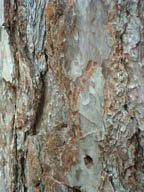an alternative approach to still life

Done on a full size watercolour sheet, so large
This is a VERY old still life from at least 15 years ago, before I did my degree, so I'm not holding it up as a great painting!
It was done in an adult ed class and the tutor had provided a pile of interesting objects on a table. We had to select one, take it away and paint it on a large sheet of paper - then return, select another and add it somewhere. It is NOT meant to read as if it was a set up arranged this way but as a collection of interesting objects which could be linked - for instance all art equipment - but needn't be.It was in response to the work of Elizabeth Blackadder who tends to work this way.
- The objects didn't have to be to scale with each other
- we needed to consider the final composition as we added each one - how to integrate them?
- how to move the eye around the composition?
- how to balance the composition colourwise, sizewise etc
I used the pattern of the cutwork cloth, one of the items, and the beads to link objects and the direction of lines and the flute thing to carry your eye in the direction I wanted, looping you back round to look at other objects.
You'll see that with some items the object wasn't to make it look 3D or realistic but to use the pattern and shape - like the way the vase trails of into a reduced pattern or the cutwork cloth is reduced to a pattern to link the other objects.
It's a fun and different way to approach still life and for myself I find it more interesting to work this way - if I do any still lifes now, they will be done with a similar approach.
I'm not a photorealist and anything done now would be looser, like my flowers, but still observational.
It's also easy to work on over a period of time, building a large painting and a set up doesn't have to left out for a long time - I work from life, not photos.
If I was to do it now there would be more lost edges, more overlapping and patterns trailing off/overlapping other objects and generally slightly more abstract elements.
I thought this approach might interest people as an alternative way of playing with still life? I'd be interested to hear what people think.



Comments
I really like the rhythm you've achieved in this piece - the way the beads lead the eye, and the color and pattern hold things together. It's very dynamic, but not so much that you can't linger and enjoy the disparate elements.